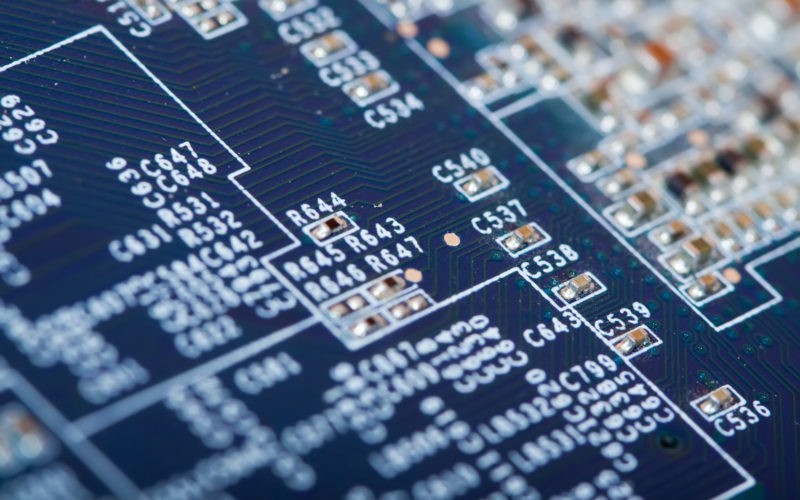Energy analysts consistently observe the transformative impact of power electronics in commercial ventures. These technologies are more than just theoretical concepts. They are practical solutions that enhance operational efficiencies and ensure robust energy management. The sophisticated energy conversion and management they offer directly translate into increased productivity and cost-efficiency. This article will focus on the practical benefits of power electronics in modern business operations, highlighting the latest trends and their real-world applications that are reshaping commercial sectors. By understanding these advancements, businesses can stay competitive in a rapidly evolving market.
Applications of Power Electronics in Commercial Ventures
Enhancing Efficiency and Reliability
Power electronics, through devices like inverters, converters, and advanced control systems, are key to enhancing operational efficiency and reliability in commercial settings. These components are not just abstract concepts. They are tangible tools that businesses can use to optimize their electrical systems. They play a crucial role in managing power supply, improving power quality, and reducing energy waste. Significant cost savings and performance improvements can be achieved through the strategic integration of these technologies.
Energy Management Systems
Power electronics are not just about enhancing operational efficiency, they are also the backbone of sophisticated energy management systems. These systems, by optimizing energy use, reducing operational costs, and improving overall energy efficiency, are instrumental in the sustainable development of commercial buildings. They achieve this by leveraging advanced semiconductor technologies alongside smart converters and controllers to precisely regulate and modify the electrical power flow. This comprehensive approach to energy management, made possible by power electronics, is a significant step towards a more sustainable future.
By managing and automating energy distribution based on real-time demand and supply analytics, they significantly reduce energy wastage. Additionally, the integration of renewable energy sources such as solar and wind through power electronics facilitates a smoother incorporation of these variable power supplies. This not only aids commercial buildings in achieving greater energy independence but also enhances resilience against grid instability, marking a significant step towards sustainable energy management.
Innovative Switching Solutions
Power electronics are revolutionizing commercial ventures through innovative switching solutions, significantly enhancing operational efficiency and energy management. Smart power electronics boards and advanced smart switches utilize real-time data to manage and optimize electrical loads dynamically. These technologies enable precise control over various systems, such as lighting and HVAC, adapting to occupancy and usage patterns to reduce energy consumption and operational costs.
Further advancements are evident in smart low-voltage switchboards and enhanced switchgear, which integrate seamlessly with building management systems. This integration offers centralized control and real-time monitoring, which is crucial for proactive maintenance and energy optimization. Modern switchgear, augmented with power electronics, provides robust protection, superior load management, and swift fault resolution, making these technologies indispensable for managing the complexities of today’s commercial energy demands. Together, these innovative solutions not only streamline operations but also pave the way for sustainable and resilient commercial infrastructures.
Supporting Renewable Energy Integration
The shift towards sustainable energy sources is undeniable, and power electronics is at the heart of this transition. Power electronic systems are integral in integrating renewable energy sources such as solar and wind into existing commercial power grids. These systems not only manage the variability of renewable energy but also ensure that the integration is smooth and efficient. This capability is vital for businesses aiming to reduce their carbon footprint while maintaining energy reliability.
Driving Innovations in Electric Vehicle Charging
Electric vehicles (EVs) are becoming increasingly popular, and power electronics play a pivotal role in the development of efficient EV charging solutions. Power converters, for instance, are essential for converting alternating current (AC) from the grid to direct current (DC) required to charge EV batteries. This process needs to be fast, efficient, and safe to meet commercial demands, particularly in settings like public charging stations and fleets.
Facilitating Advanced Manufacturing Processes
In the manufacturing sector, power electronics are key to enabling more precise and energy-efficient processes. Technologies such as variable frequency drives (VFDs) allow for the fine-tuning of motor speeds, enhancing the control over manufacturing equipment. This precision leads to improved product quality, reduced machine wear and tear, and lower energy consumption.
Trends Shaping the Future of Power Electronics
As we look toward the future, several trends are shaping the power electronics landscape in commercial ventures:
Miniaturization
The drive towards smaller, more compact power electronic devices continues unabated. This trend allows for their integration into a wider range of products and systems without compromising performance. The compact nature of these devices not only saves space but also enhances the aesthetic appeal of commercial setups, contributing to more streamlined and modern designs.
Increased Intelligence
The incorporation of AI and machine learning into power electronics enhances their capability to predict failures and optimize performance. It also enables these systems to conduct real-time adjustments that adapt to changing environmental conditions and user demands. This intelligence layer is pivotal for developing systems that can autonomously improve energy efficiency and system reliability over time.
Enhanced Durability
Developments are also focused on making devices more robust and able to withstand harsher environments, which is crucial for expanding their applications in industrial settings. Enhanced durability ensures that power electronics can operate reliably in extreme conditions, reducing downtime and maintenance costs while prolonging the lifespan of the technology, thereby providing better ROI for businesses relying on these systems.
Interoperability and Standardization
As the scope of power electronics broadens, the need for interoperability between different systems and devices becomes critical. Efforts are increasingly directed toward standardizing components and communication protocols to ensure seamless interaction across diverse power electronic devices. This standardization facilitates easier integration, reduces complexity, and drives wider adoption across various sectors.
Sustainability and Green Technology
The trend towards sustainability continues to influence the development of power electronics. Manufacturers are increasingly focusing on reducing the environmental impact of their products by using recyclable materials and improving energy efficiency. Innovations in power electronics are geared towards enhancing the energy efficiency of systems and integrating seamlessly with renewable energy sources, aligning with global efforts to reduce carbon footprints and promote sustainable business practices.
Conclusion
The role of power electronics in commercial ventures is expansive and growing. These technologies not only support the core operations of businesses but also drive innovation in energy management and sustainability efforts. As we continue to push the boundaries of what is possible with power electronics, the potential for further transforming commercial infrastructures remains vast. Staying at the forefront of these trends is essential for any business looking to thrive in a technology-driven marketplace.












